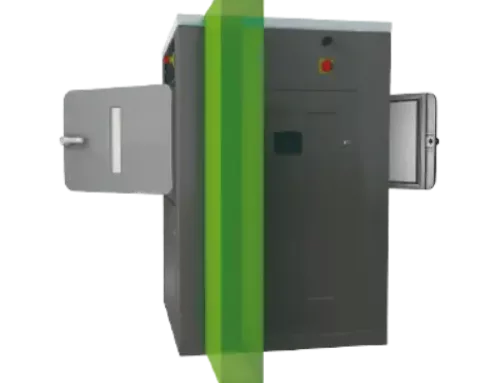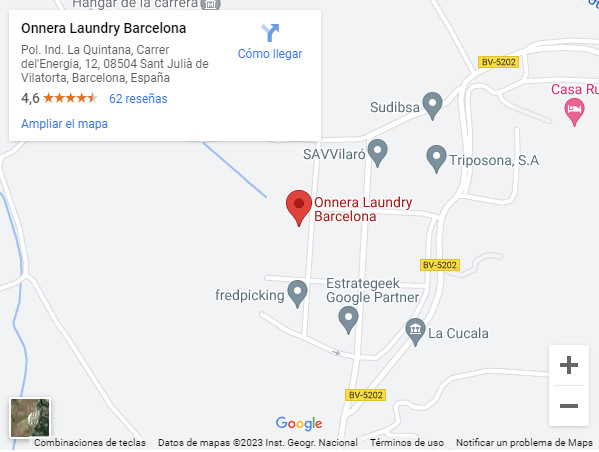22 October 2020
Best practices to handle linen and laundry in nursing homes for the elderly
Measures to prevent cross-contamination or infection in bedclothes and clothing in care homes for the elderly
In this post, we would like to take a moment to reflect on how clothes and bedclothes are washed and sanitised in nursing homes. As we all know, it is vital that laundry, and the cycle it follows, be carried out in a meticulous manner. So, we will look at the specific characteristics that linen and clothing must have for this sector. We will analyse the most common infections that clothing can carry, and then we will examine the critical points of infection in nursing homes. And finally, based on our experience with commercial washing machines and hygiene standards, we propose solutions and recommendations
The laundry cycle in a nursing home
The cycle or route that laundry and clothing follow in a nursing home is very important in order to control the level of contamination. It starts with every new resident or item of linen that enters the home, and the cycle continues in the laundry room where specialised machinery is used to ensure optimal standards of hygiene.
This is where Domus comes in. We supply commercial washing machines designed specifically for the laundry cycle in nursing homes.
Domus has vast experience as a laundromat equipment supplier and has specialised in sanitary laundry equipment. Over the years, we have accumulated a high level of know-how on sanitary and hygiene processes, and we have applied this expertise into the design and production of our laundry equipment for care homes. So, by using our commercial washing machines, we can share our know-how with you.
Care home linen and fabrics

The type of clothing or linen that is handled in a laundry in a nursing home is extremely varied; bedlinen, terrycloth towels, clothing worn by residents and professionals, amongst others. Each fabric should be handled and processed in the laundry accordingly. Let’s take a look at bedlinen as an example. Sheets and pillow cases should be made of cotton or polyester, and it is important to know that bedding has a short lifespan because it is washed frequently and in an aggressive laundry cycle. This is also true of terry cloth which is used in bathrobes, towels and other personal hygiene accessories. These bath or toiletry fabrics should contain a high percentage of cotton.
In contrast, materials or draperies used throughout the nursing home in bedrooms, dining rooms or by the cleaning staff may be made of many different fabrics, depending on their purpose. Materials may range from cotton to polyester and plasticized fabrics.
Of course, we must not forget the clothing worn by medical or healthcare staff which is usually made of different fabrics. An important consideration for professional clothing is to use a material that is non-irritant. In nursing or care homes, it is crucial that this clothing be completely disinfected and cleaned during the laundry cycle.
Types of infections and critical points in a nursing home laundry

Clothes can pick up different types of infections caused by fungi, bacteria or viruses. Given the current situation, it is of vital importance that nursing and care homes take extreme safety precautions with residential laundry and that they are committed to obtaining the highest degree of hygiene and disinfection in all clothing and linen.
However, bear in mind that viruses can appear not only on clothing but also on surfaces such as wood, stainless steel or even liquids.
Likewise, bacteria also develop on most surfaces and in certain conditions such as temperature and humidity, they reproduce exponentially.
These are important considerations as surfaces can become critical points of infection. For example, when clothing or linen is transported from or to rooms, the risk of cross-contamination between dirty and clean laundry is high.
For this reason, any items used to transport laundry must be disinfected frequently, including laundry trolleys and, if laundry is outsourced to an external laundrette, any vehicles used to pick up and deliver the laundry must also be decontaminated. Likewise, all commercial washing machines used must be able to meet the hygiene standards required for residential laundry.
Clean laundry must be delivered in protective and sterile bags. It is vital that the staff who transport laundry adhere meticulously to hygiene rules and measures, such as wearing gloves and regular disinfection with sanitation gel.
Once clean laundry has been delivered, it should be stored and folded in germ-free conditions where periodic cleaning and disinfection tasks are standard.
Now, let’s go back to the beginning of the cycle. We have to prevent and control infection in our day-to-day while we live and move around the nursing home; in bedrooms, the dining room, the gym, or the rehabilitation room.
At Domus, we recommend that nursing homes have a method to classify used or worn linen and clothing according to the type of fabric or the system used to pick it up for washing. Laundry should be deposited in water-soluble bags to prevent contact with contaminated clothing or linen at any time.
We really hope that these guidelines and recommendations are helpful and that they clear up any questions you may have about hygiene and disinfection processes to handle laundry in nursing homes for the elderly. Our range of commercial washing machines is designed to run cycles to disinfect laundry in or from nursing homes and care homes. In current times, it is vital that your laundromat equipment supplier is one you can trust, Trust in Domus, because we care.




